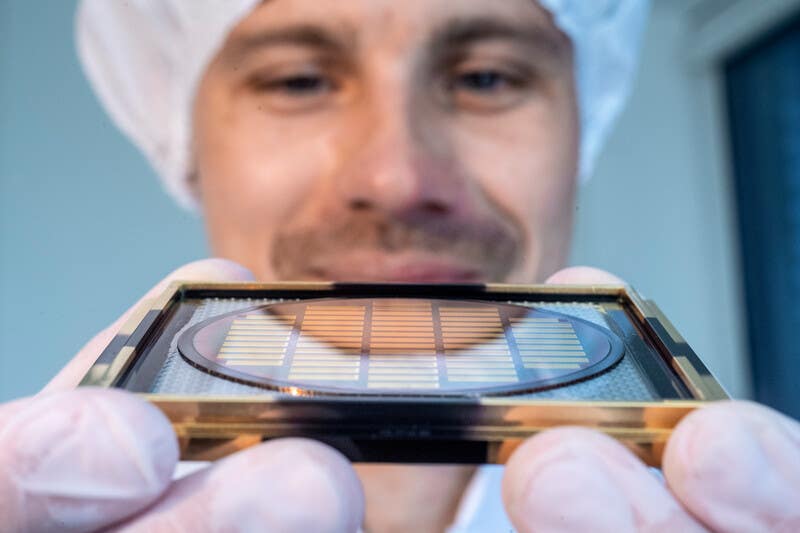New study finds major differences between men and women when it comes to pain
New research uncovers why chronic pain affects women more, paving the way for better treatments targeting women’s unique biology.

Women experience chronic pain more often than men, yet treatments often fail. (CREDIT: Shutterstock)
Chronic pain affects millions of people, but if you're a woman, you're more likely to suffer. This reality has puzzled doctors and researchers for decades, especially as traditional treatments continue to fall short for women. Now, scientists have discovered why chronic pain might hit women harder, opening doors to better treatment options specifically tailored for women.
Neuropathic pain, caused by damage to nerves or the nervous system, can lead to a condition called mechanical allodynia. With allodynia, even gentle touches—like clothing brushing against your skin or a cool breeze—can trigger intense pain. Many current treatments, including antidepressants, anticonvulsants, and opioids, provide limited relief for women and often lead to more serious side effects.
A recent groundbreaking study sheds new light on why this happens, revealing key biological differences between males and females in how chronic pain develops and persists.
A Surprising Role of Immune Cells
When researchers explored chronic pain, they realized something unexpected: different immune cells cause pain differently in males and females. A protein called pannexin-1 (Panx1), found in immune cells, emerged as a crucial factor in causing nerve-related pain, but the exact cells involved were a mystery until now.
The new study, led by Dr. Tuan Trang from the University of Calgary, identified precisely how Panx1 contributes to chronic pain differently in males and females. The study, published in the scientific journal Neuron, focused on experiments involving both rats and mice, providing clear insights into the biology behind sex-based differences.
“Both males and females develop pain, but each sex develops it through different means,” explains Trang. “This study identifies a very unique type of biological process through a specific immune cell that is distinctive to each sex.”
In males, nerve damage activates Panx1 in a type of immune cell called microglia, which then releases a molecule known as vascular endothelial growth factor-A (VEGF-A). This molecule directly contributes to the pain men feel after nerve injury. Blocking VEGF-A significantly reduced pain in male rodents, showing a promising path to treatment.
However, females experienced a very different biological reaction. Instead of microglia, their chronic pain response involved Panx1 activation in another type of immune cell called CD8+ T cells. These cells flood into the spinal cord after injury, releasing leptin, a hormone that can increase pain sensitivity. Scientists found that neutralizing leptin drastically reduced pain in females, but not in males.
Related Stories
Why Leptin Matters for Women's Pain
Leptin isn't new to pain research; doctors have noticed elevated leptin levels in women experiencing chronic pain since the 1980s. Women suffering from conditions like fibromyalgia, arthritis, and chronic migraines often show higher leptin levels than healthy individuals. Until now, researchers weren't sure if leptin actually caused pain or just appeared alongside it.
“In the clinic, we’ve known for many years that women are more likely than men to suffer from chronic pain,” says Dr. Lori Montgomery, a pain specialist and professor involved with the research. “It's often hard to know why some people respond to treatment and others don’t. Both sex and gender are important factors that need a lot more investigation, but this latest research might prove to be one of the ways that we can personalize treatment for patients so that it’s more likely to be effective.”
These findings clearly point to leptin as a direct contributor to women's chronic pain, confirming that female-specific treatments could effectively target this hormone.
A Call to End the Gender Gap in Research
Despite clear evidence that women suffer from chronic pain more than men, preclinical research has overwhelmingly focused on males. Consequently, treatments developed through male-centric studies often fail to help female patients.
“Injury to a nerve can be debilitating,” emphasizes Trang. “We know that a lot of preclinical research has been in male subjects. Consequently, treatments were often developed from a male-based understanding and may not be very effective in females.”
The Canadian Pain Task Force highlighted this problem in a 2019 report. They found that chronic pain is consistently more common in females across all age groups—even among children. Still, most pain studies continue to focus mainly on males, leaving women's specific medical needs unaddressed.
This gender disparity isn't just unfair—it's harmful. Without treatments that address the biological differences between men and women, millions of women remain trapped in cycles of persistent pain and ineffective medications.
Future Treatments: Personalized Pain Relief
The study's authors see their discovery as a crucial step toward personalized pain medicine. Instead of offering generic treatments that don't fit women's biology, doctors could soon provide therapies targeting the immune pathways unique to each sex.
For males, drugs designed to block VEGF-A or microglial activity may offer relief from nerve-related pain. For women, treatments aimed at reducing leptin could revolutionize care, providing targeted relief without the harsh side effects of current medications.
Dr. Montgomery emphasizes the importance of this research, saying, “this latest research might prove to be one of the ways that we can personalize treatment for patients so that it’s more likely to be effective.”
By pinpointing the exact immune cells involved in pain, doctors might soon offer patients treatments tailored specifically to their biological needs. This could drastically reduce chronic pain in women, improving quality of life and significantly cutting down the use of potentially addictive painkillers.
This breakthrough doesn't just offer hope to the millions of women currently suffering; it demands a shift in medical research. Scientists and doctors now have concrete evidence that understanding and treating pain in women requires a fundamentally different approach.
The Next Steps in Pain Research
While these findings are promising, the path to clinical treatments requires further research. Scientists must explore how these immune pathways function in humans, not just animals, and how they interact with other factors like age, diet, and genetics. They must also consider gender-related factors, including social stress, hormonal cycles, and lifestyle, which could influence how chronic pain develops and persists.
Researchers like Trang and Montgomery are optimistic that these discoveries will drive further studies, ultimately leading to new, effective treatments. With more understanding comes better care, tailored to the individual needs of each patient, finally addressing decades of overlooked suffering among women.
Chronic pain may remain a widespread challenge, but thanks to research like this, relief tailored specifically for women could soon be on the horizon.
Note: The article above provided above by The Brighter Side of News.
Like these kind of feel good stories? Get The Brighter Side of News' newsletter.
Rebecca Shavit
Science & Technology Journalist | Innovation Storyteller
Based in Los Angeles, Rebecca Shavit is a dedicated science and technology journalist who writes for The Brighter Side of News, an online publication committed to highlighting positive and transformative stories from around the world. With a passion for uncovering groundbreaking discoveries and innovations, she brings to light the scientific advancements shaping a better future. Her reporting spans a wide range of topics, from cutting-edge medical breakthroughs and artificial intelligence to green technology and space exploration. With a keen ability to translate complex concepts into engaging and accessible stories, she makes science and innovation relatable to a broad audience.



